The Valtra 8400 of Finnish grain farmer Patrick Ståhls is a good example of how even an older tractor can be retrofitted with precision farming features. Ståhls cultivates a 175-hectare grain farm in Loviisa, Finland, as a part-time job and works at the local Valtra service dealer as a spare parts salesman.
The 2002 Valtra 8400 tractor belonging to Finnish grain farmer Patrick Ståhls has been retrofitted with Trimble automated steering, ISOBUS implement management and Logmaster telemetry. The purchase price of less than 10,000 euros has already been paid back many times over in lower fuel and fertiliser costs.
“My old tractor has automated steering, ISOBUS implement control and Logmaster telemetry. The automated steering has already been in use for ten years, the ISOBUS for just a year and the telemetry for six years,” says Ståhls.
In addition to the Valtra 8400, his farm has a Valtra N154 Versu from 2016 and a Sampo 2065 combine harvester from 2011. The N154 also has Trimble precision farming equipment, and the Sampo has had crop mapping equipment since 2018. The systems communicate well with each other, and also with the cultivation planning software. The antenna and display can be easily transferred from one machine to another.
“Maps, waylines and other information can be easily sent from one machine to another and to the farm’s computer. If the N154 had Valtra’s own automated steering, maps could also be exchanged with it. My Väderstad Rapid seed drill also communicates with the ISOBUS on the 8400 without any problems.”
Technology quickly pays for itself
The updates made by Ståhls to his Valtra 8400 tractor have cost around 8000 euros. Since the automated steering was installed ten years ago, today the price of the package would be slightly higher.
“If you calculate that the technology avoids reversing on headlands plus 50 centimetres of overlap on each wayline, then you can see how quickly it pays for itself in fuel and fertilisers. They also make my work much easier.” For example, Ståhls spreads fertilisers on his fields on a site-specific basis. He makes a fertilisation map based on the data collected by the harvester’s crop mapping equipment and the amount of green mass visible from satellite images.
“If you calculate that the technology avoids reversing on headlands plus 50 centimetres of overlap on each wayline, then you can see how quickly it pays for itself in fuel and fertilisers. ”
“I don’t spray my own fields, because they are organic, but I have made waylines for customers for spraying their own fields. It’s pretty light contracting. For example, a neighbour may ask me to make waylines for a 16-metre sprayer because he doesn’t have automated steering, and then he can do the actual spraying himself.” •

